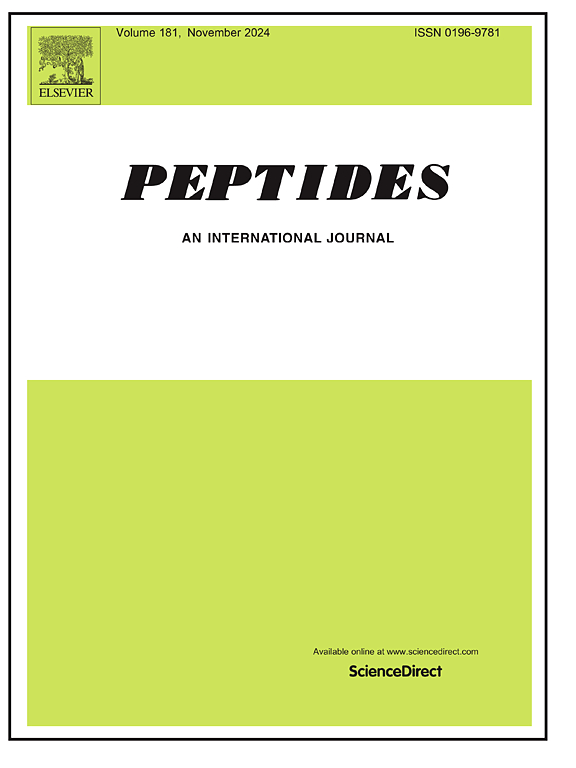Protective effects of PACAP against high glucose-induced inflammation on air-liquid interface corneal epithelium barrier
IF 2.9
4区 医学
Q3 BIOCHEMISTRY & MOLECULAR BIOLOGY
引用次数: 0
Abstract
Diabetes mellitus (DM) is a chronic metabolic disease considered the “epidemic” of the new millennium, with devastating impacts on quality of life and global prevalence. One of the most common ocular complications is diabetic keratopathy (DK), often overlooked compared to other diabetes-related diseases. This disease causes significant corneal damage and is characterized by an overactive inflammatory condition, alteration of the corneal epithelial barrier, and delayed wound healing. Current therapies do not always ensure effective restoration of corneal function. In our previous study, we found that changes in the endogenous pituitary adenylate cyclase-activating polypeptide (PACAP) expression can concur for delayed epithelial wound healing in diabetic cornea. Moreover, the peptide showed cytoprotective effects on the corneal epithelium, promoting cell viability and wound healing under high glucose conditions, suggesting its potential effect in this diabetes-related disease. Therefore, this study aims to investigate the effect of PACAP against hyperglycemia-induced inflammation. To better resemble the natural conditions of corneal epithelium in vivo, an air-liquid interface (ALI) culture of the corneal epithelial cells was performed. The ALI corneal epithelium was cultured under high-glucose conditions to generate a model of DK. Our model reproduced well-established molecular and cellular characteristics of this pathology, including barrier thickness decrease and inflammation, with increased expression of IL-1β, TNF-α, and p-NF-kB. Our results indicated that PACAP significantly reduced the levels of proinflammatory cytokines IL-1β and TNF-α and inhibited the activation of NF-kB, an important mediator of inflammation. Moreover, PACAP improved epithelial morphology and corneal barrier thickness, suggesting its therapeutic potential in the treatment of DK.
PACAP对高糖诱导炎症对角膜气液界面上皮屏障的保护作用
糖尿病(DM)是一种慢性代谢性疾病,被认为是新千年的“流行病”,对生活质量和全球患病率具有破坏性影响。糖尿病性角膜病变(DK)是最常见的眼部并发症之一,与其他糖尿病相关疾病相比,它往往被忽视。这种疾病引起严重的角膜损伤,其特征是炎症过度活跃,角膜上皮屏障改变,伤口愈合延迟。目前的治疗方法并不能保证角膜功能的有效恢复。在我们之前的研究中,我们发现内源性垂体腺苷酸环化酶激活多肽(PACAP)表达的变化与糖尿病角膜上皮伤口愈合延迟有关。此外,该肽对角膜上皮具有细胞保护作用,在高糖条件下促进细胞活力和伤口愈合,提示其在糖尿病相关疾病中的潜在作用。因此,本研究旨在探讨PACAP对高血糖性炎症的作用。为了更好地模拟角膜上皮在体内的自然状态,我们对角膜上皮细胞进行了气液界面(ALI)培养。在高糖条件下培养ALI角膜上皮,形成DK模型。我们的模型再现了这种病理的分子和细胞特征,包括屏障厚度减少和炎症,以及IL-1β、TNF-α和p-NF-kB的表达增加。我们的研究结果表明,PACAP显著降低了促炎细胞因子IL-1β和TNF-α的水平,并抑制了NF-kB的激活,NF-kB是炎症的重要介质。此外,PACAP改善上皮形态和角膜屏障厚度,提示其治疗DK的治疗潜力。
本文章由计算机程序翻译,如有差异,请以英文原文为准。
求助全文
约1分钟内获得全文
求助全文
来源期刊

Peptides
医学-生化与分子生物学
CiteScore
6.40
自引率
6.70%
发文量
130
审稿时长
28 days
期刊介绍:
Peptides is an international journal presenting original contributions on the biochemistry, physiology and pharmacology of biological active peptides, as well as their functions that relate to gastroenterology, endocrinology, and behavioral effects.
Peptides emphasizes all aspects of high profile peptide research in mammals and non-mammalian vertebrates. Special consideration can be given to plants and invertebrates. Submission of articles with clinical relevance is particularly encouraged.
 求助内容:
求助内容: 应助结果提醒方式:
应助结果提醒方式:


